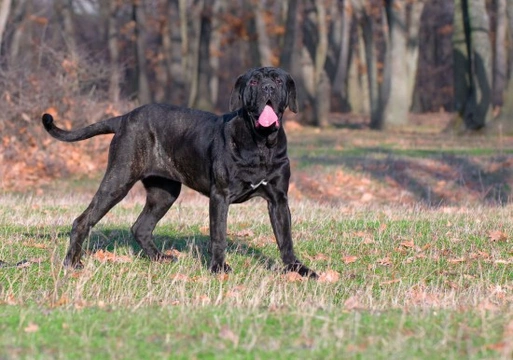
Neapolitan Mastiff Dog Pros and Cons
The Neapolitan mastiff dog is one of the world’s largest dogs, standing up to 31” tall at the shoulder and weighing up to 155lb. They are also long as well as tall and muscular, and really are up there amongst the biggest canine giants! Their large and somewhat fearsome appearance make them popular as guard dogs and for property protection, and they do indeed have the core trait of being natural guardians. Hailing from Italy, the breed is now popular across the world, but these dogs can be challenging to keep and train, particularly for the first time dog owner.
If you are wondering if a Neapolitan mastiff might be the right dog for you, this article will teach you a little more about some of the pros and cons of the breed, in order to help you to make an informed decision. Read on to learn more!
A long history as a guard dog
The Neapolitan mastiff has a long and distinguished history as a guard dog and protector, commonly used on farms and country estates throughout Italy. This is due to a combination of the breed’s natural traits and selective breeding, and their alert, watchful temperaments. While this trait can be used positively if you live in a remote or rural area, it does mean that keeping a Neapolitan mastiff within the domestic home can be challenging, as they tend to be territorial and suspicious of strangers.
Interactions with other people
While some dog breeds are renowned for their open natures and general adoration of everyone they meet, the Neapolitan mastiff is rather different. They will tend to forge a strong, close bond with their immediate family and particularly their main carer, while being wary and suspicious of strangers, both within the home and outside.
This may potentially cause problems if you tend to have a lot of guests visit you, be they human or canine. Proper training and socialisation is more important for this breed than for any other, to ensure that they can be controlled around strangers, and know how to behave.
Beginning socialisation and training while the dog is still very young is the best way to go about ensuring that the Neapolitan mastiff will tolerate other people in their territory, and do what they are told!
Exercise requirements
The Neapolitan mastiff is a large dog with long legs, and they need to be able to stretch them sufficiently and move around freely. They require a relatively roomy home and garden in order to be comfortable, and need two to three walks per day. While they can walk for relatively long periods of time and this is necessary in order to keep them fit, healthy and entertained, they are not among the most lively or fizzy of dogs, and generally prefer to keep their pace low and lead a relatively sedentary life.
As they age, they will spend more and more time chilling out and sleeping, and they are not one of the breeds that poses a constant challenge to keep fit and entertained.
Neapolitan mastiff care in hot weather
The Neapolitan mastiff is very sensitive to heat, and they do tend to wilt during the hottest days of the summer and find hot weather rather uncomfortable. Provision should be made to keep them cool and give them a shaded area when the weather is hot, as well as of course constant access to fresh water. Walking during the summer months should be undertaken in the early mornings and evening when the weather is at its coolest, and while the breed is generally not over exuberant at the best of times, in hot weather, they will greatly prefer doing nothing at all!
Health and longevity
The Neapolitan mastiff is not one of the most long lived of dog breeds, with an average lifespan of 8-10 years. As a general rule, large and giant breeds do not live as long as smaller dogs, although there are of course exceptions!
The breed is also susceptible to a range of potential genetically inherited health conditions too, which all potential owners should be aware of before making a purchase. As with many other large and giant breeds, bloat and GDV can be a risk for the breed, as can hip dysplasia, progressive retinal atrophy and pyoderma. They also have a higher than usual incidence rate of bone cancer and leukaemia.
Drooling
No article on the Neapolitan mastiff would be complete without making at least cursory mention to the breed’s propensity to drool! Their droopy faces and loose lips mean that they are among the canine population’s most significant droolers, and if they shake their heads after eating or drinking, they are likely to splatter everything within range! They will also salivate excessively when hot, stressed, or confused!



